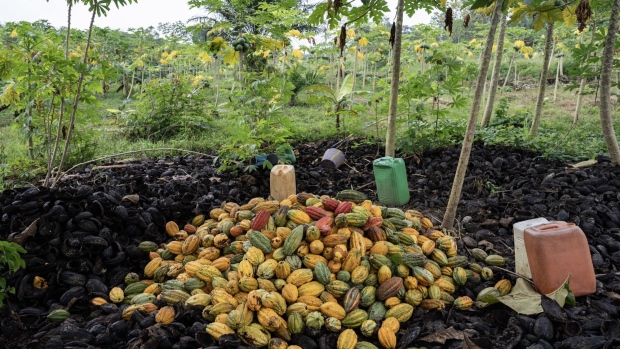Dec 6, 2022
Higher Cocoa Prices Crucial to Easing Farm Poverty, Report Says
, Bloomberg News

(Bloomberg) -- Higher prices, rather than bigger crops, are crucial to help lift cocoa farmers out of poverty as inflation spirals, according to a report from non-governmental organizations.
Pressure has been mounting to tackle child labor on cocoa farms and ensure growers earn a living income. That’s spurred cocoa companies to launch sustainability programs aimed at boosting production in West Africa, where the bulk of the world’s output is sourced.
But the global cost-of-living crisis and rising expenses for inputs like fertilizer are adding to the woes for farmers, according to the biennial Cocoa Barometer report from a consortium that includes Oxfam America and WWF France. Current prices and yields aren’t bearing a living income for many producers, and output increases alone won’t solve the issue, its modeling shows.
“Doing business has become a lot more expensive, but selling your product has not become more lucrative,” said Antonie Fountain, director of the Voice Network, which developed the barometer. “Without higher cocoa prices, all the other interventions will not cut it.”
To increase farmer pay, Ivory Coast and Ghana in 2019 imposed a premium of $400 a ton over the futures prices for their cocoa. Still, the so-called living-income differential remains contentious as regulators complain it has been undermined by a quality discount -- of up to $200 a ton at times -- determined by supply and demand.
London cocoa futures are up 15% this year, while remaining shy of historic peaks. Regulators and activists are exploring ways to decouple farm-gate cocoa prices from the commodity market, and some chocolate makers have already rolled out a living-income reference price that they are applying in their supply chain, Fountain said.
©2022 Bloomberg L.P.





